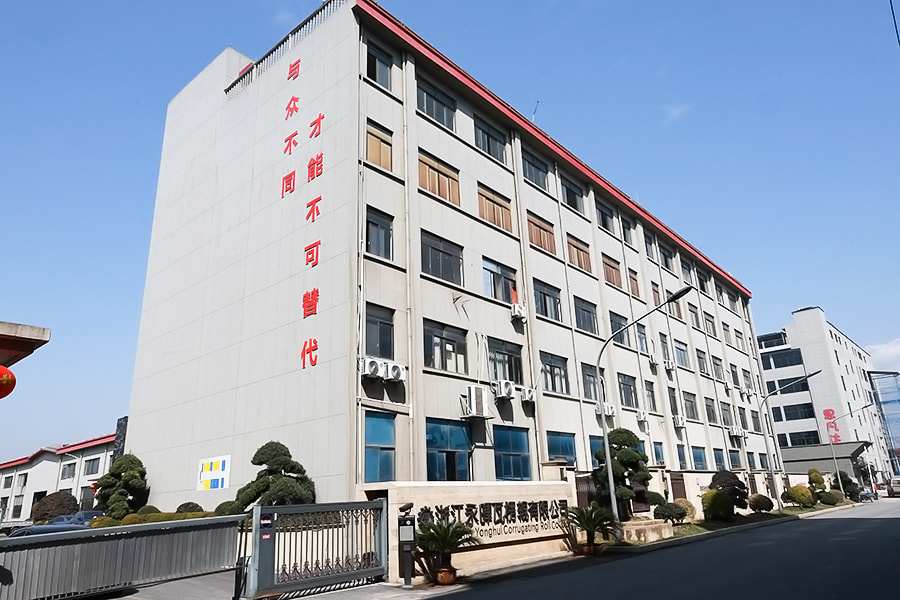Contact us
Focused on the R&D and manufacturing of high-quality corrugated rollers, the "heart" component of the corrugated cardboard production line.
+86-18661680180
Corrugating rolls are essential components in the production of corrugated cardboard. These precision-engineered rolls are used in corrugating machines to shape the fluted paper that forms the middle layer of corrugated board. Typically made from high-quality steel, corrugating rolls are designed to withstand high pressure and heat, ensuring consistent performance and durability. The surface of these rolls is carefully crafted to create the desired flute profile, which directly impacts the strength and quality of the final cardboard product. Regular maintenance and proper alignment of corrugating rolls are critical to avoid downtime and ensure High quality production efficiency. We often customize these rolls to meet specific requirements, such as different flute sizes or materials, to cater to various industrial needs.
Enterprise establishment

Employees


A: Corrugating rolls (or corrugated box rolls) are precision-engineered cylindrical rollers used in corrugators to shape flat paper into fluted profiles (e.g., A, B, C, or E flute). These rolls are the heart of the corrugated board production line, directly impacting:
- Board quality: Flute consistency, glue penetration, and liner bonding.
- Production efficiency: Wear resistance affects downtime and roll lifespan.
- Cost control: Poor-quality rolls increase energy consumption and waste.
At Zhejiang Yonghui, our rolls are made from high-grade alloy steel with advanced heat treatment to ensure durability (typically 8–12 million linear meters of production before refurbishment).
A: Key types include:
1. Single-Wall Corrugating Rolls: For standard 2-ply boards (top liner + fluted medium).
2. Double-Wall Rolls: Combine two flute profiles (e.g., BC or EB) for heavier 3-ply boards.
3. Preheating Rolls: Condition paper before fluting to optimize moisture and temperature.
Selection Tips:
- Match flute profile to your end-use (e.g., E flute for retail packaging, B flute for die-cutting).
- Consider hardness: Our rolls use 55–60 HRC surface hardness (Chrome or Carbide-coated) for abrasive papers.
- Ask about groove geometry: Deeper grooves suit high-speed corrugators (300+ m/min).
A: The substrate and coating determine longevity and maintenance costs:
- Alloy Steel Core: Provides structural integrity under high pressure (our rolls undergo ultrasonic testing for defects).
- Chrome Plating: Standard for many papers; resists corrosion and extends lifespan.
- Carbide Coating: For abrasive recycled papers—reduces wear by 30–50% vs. chrome.
Pro Tip: If producing boards with >30% recycled content, opt for carbide-coated rolls to minimize groove wear and glue buildup.
A: Even premium rolls degrade without proper care. Follow these steps:
1. Daily Cleaning: Remove glue residue and paper dust to prevent uneven wear.
2. Balancing Checks: Imbalanced rolls cause vibrations, reducing flute accuracy.
3. Refurbishment Timing: Schedule regrinding at 0.1–0.2mm wear depth (we offer recoating services).
A: Key criteria for procurement:
1. Certifications: ISO 9001, ISO 14001 (like ours) ensure quality/environmental standards.
2. Testing Capabilities: Request hardness reports, dynamic balancing data, and MTBF (mean time between failures) records.
3. Customization: Can they modify flute pitch or groove depth for your specific paper grade?
4. After-Sales Support: Look for suppliers offering emergency replacements and technical audits.
Red Flag: Suppliers unable to provide wear-rate guarantees or case studies.
A: While cheaper rolls may save 10–20% upfront, they often incur hidden costs:
- Frequent Replacements: Low-hardness rolls wear faster, increasing annual spend.
- Production Losses: Poor flute formation raises scrap rates.
A: Yes. We've engineered rolls for:
- Micro-Flutes (F/G): Ultra-precise grooves for high-end graphics.
- Anti-Static Coatings: For electronics packaging to prevent dust adhesion.
- High-Temp Boards: Rolls with enhanced heat dissipation for starch-heavy adhesives.
Final Recommendation for Buyers
1. Audit Your Needs: Paper type, speed, and board specifications dictate roll requirements.
2. Prioritize Lifecycle Cost: Invest in coated rolls if using abrasive materials.
3. Partner with Experts: Work with manufacturers like Zhejiang Yonghui who offer data-driven selection and support.
By aligning roll specs with production realities, you'll optimize both quality and ROI. Request a free consultation to analyze your use case today.